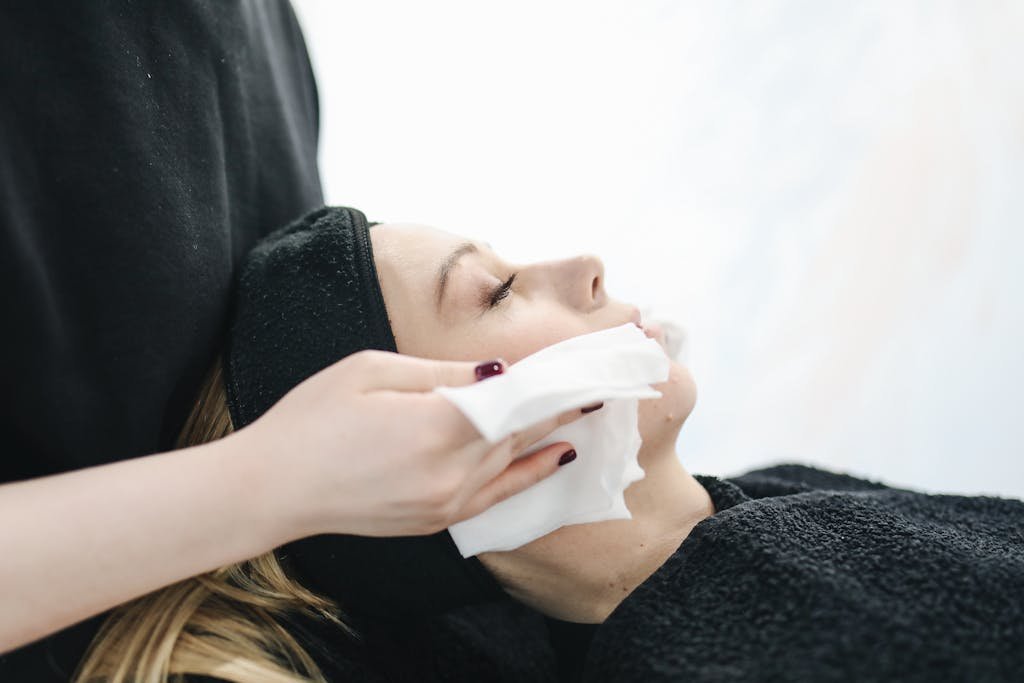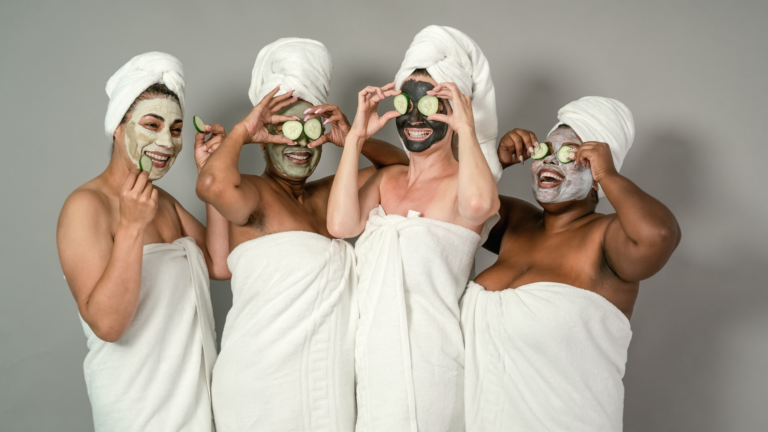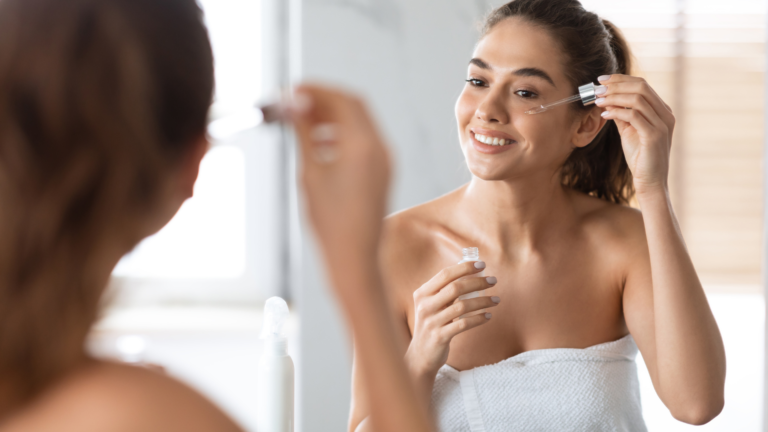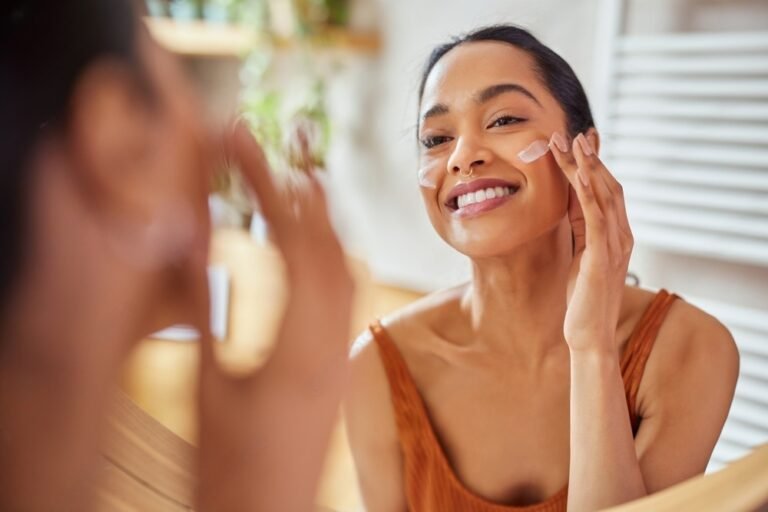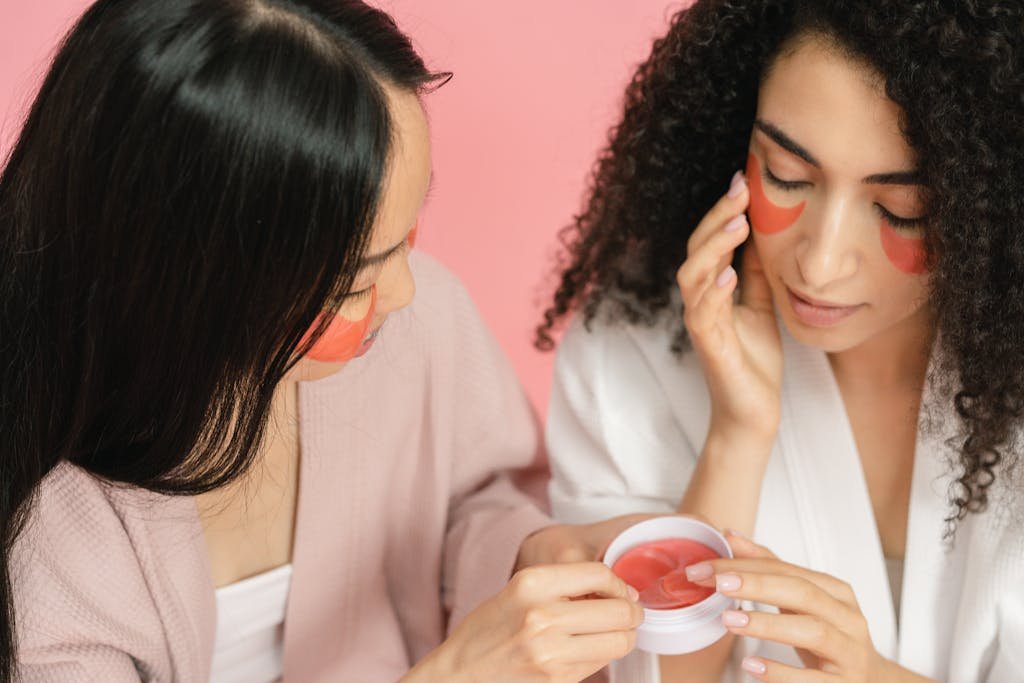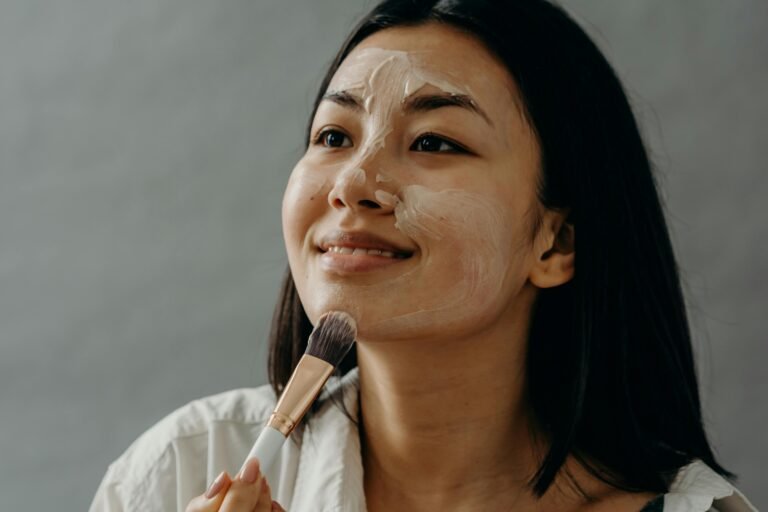How To Treat Closed Comedones- 4 Expert Tips for a glowing skin
This post may contain affiliate links. That means that if you click on a link and purchase something I recommend, I will receive a small commission at no extra cost to you. As an Amazon Associate, I earn from qualifying purchases. This helps keep my website up and running and is very appreciated. Thank you for your support! Disclaimer
Ever wondered what those annoying bumpy, textured things on your forehead are? Chances are, they’re something called Closed comedones .
Closed comedones are currently having a moment on TikTok because, frankly, they get in the way of your clean girl aesthetic. They can make achieving that smooth, glass-like skin feel impossible because of their texture
So, in today’s article, I’ll explain what Closed comedones are, why they occur, what might be causing them, and how you can treat them so things can be better.
If you don’t have time to read this post right now, why not save it for later?

Understanding Comedones
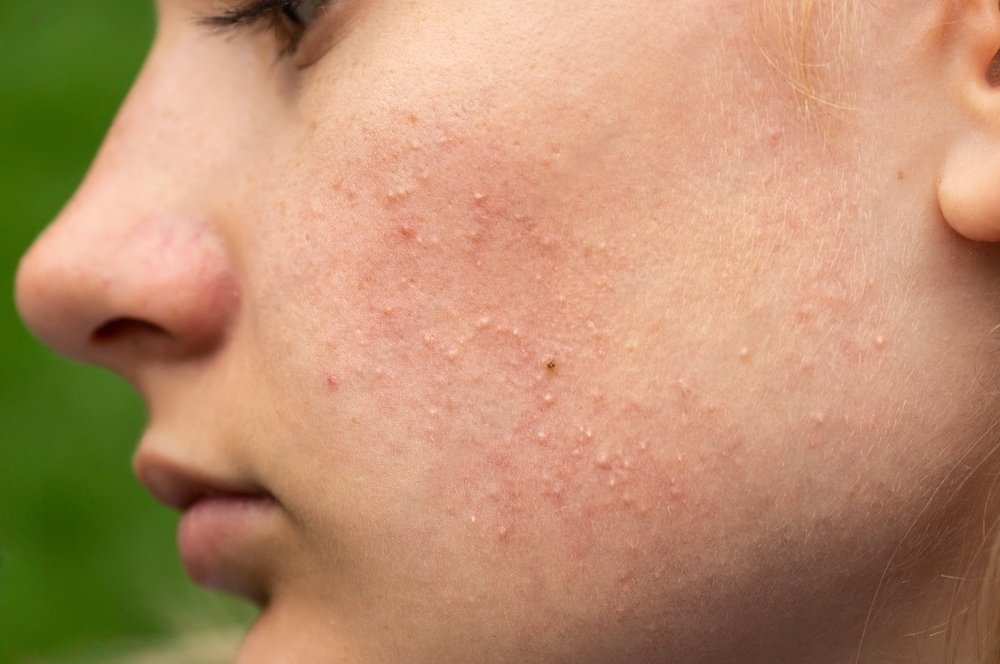
To understand what closed comedones are, let’s start with the pore , which is basically a tiny opening that links the sebaceous gland in your skin’s deeper layer to the skin’s surface, producing an oily substance called sebum. However, things can get messy down in the pore because stuff like dead skin cells, combined with ingredients found in makeup, cosmetics, and hair products, can clog these pores, forming comedones. This small obstruction in the hair follicle, over time can lead to breakouts with inflammation, such as papules, pustules, cysts, and so on. A comedone is basically a mix of trapped skin cells and oil inside that tiny pore.
Closed comedones Vs Open comedones ? What’s the difference
When we talk about comedones, whether they’re open or closed, it’s essentially like talking about two sides of the same coin.
Comedones can show up in different ways. When they’re open and exposed to air, typically seen on the nose, they become blackheads. However when they’re under the skin’s surface they are called Closed comedones , they look skin-colored or like whiteheads.
It’s important not to mix up “whiteheads” with pus-filled pimples, which are inflamed blemishes seen in acne characterized by a red base and a white head—a small collection of pus , Closed comedones , on the other hand, are not inflamed. But they can develop into inflamed pimples later on.
In simpler terms, Closed comedones are like silent blockers in your skin, causing no trouble except than getting in your way of getting a smooth skin.
Factors Contributing to Closed Comedones
When faced with any problem in life, understanding its cause is key to finding solutions and learning from mistakes. This holds true in skincare too. To effectively tackle closed comedones, we must identify common mistakes people make when dealing with them.
As a dedicated skincare enthusiast, I firmly believe that when dealing with any anomaly, it’s crucial to do no harm and remove any potential aggravators from your lifestyle. Common factors that can contribute to the formation of closed comedones include certain products used on the skin. Sometimes, just ditching these products can make a big difference. There are individuals who are just more prone to getting closed comedones simply because their skin produces stickier oil or their skin cells are more likely to clog. However, for others, it may be purely cosmetic and external.
I’ve mentioned this before in my blogs, but if you’re prone to comedones, it’s best to steer clear of facial oils and heavy cleansing balms because they can clog your pores due to their occlusive nature. Also, consider how you style your hair;If it’s always falling onto your face, it could be adding to the problem, particularly along the hairline. This means that your hair care routine might need some adjustments to alleviate the problem. Even things like helmet straps for cyclists can cause issues because they rub against your skin and block your pores.
One of the most common mistakes I observe is people neglecting to choose makeup that is easy to remove. Long-wear formulations, while convenient, can be tough to cleanse and get off, especially if you’re prone to clogged pores. I recommend opting for lighter, easier-to-remove bases and and use targeted coverage for any blemishes, rather than relying heavily on long-wear products.
Again don’t get me wrong , I’m not saying you have to ditch your makeup entirely, but pay attention to what’s in it. As certain pigments, like red or yellow, can be more likely to clog your pores. It’s essential to scrutinize your makeup kit and make adjustments accordingly.
How To Treat Closed Comedones
Now that we’ve gotten rid of any factors contributing to Closed Comedones , let’s focus on establishing a helpful routine to tackle the root cause of these blockages.
- Use BHA instead of AHA for closed comedones:
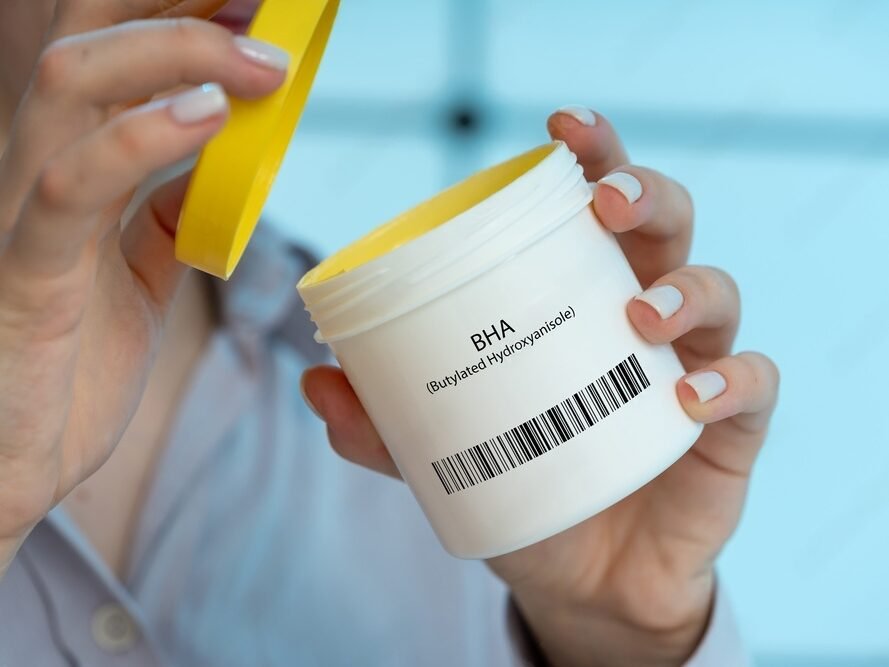
One of the first things people might do is to reach for beta hydroxy acid (BHA) as a solution. Now, the reason this exfoliating acid is more effective than an AHA (like glycolic and lactic acid) simply because AHAs are water-soluble. They just won’t penetrate effectively into oily pores. BHAs are oil soluble, which means get in oily pores better and be able to exfoliate dead skin cells that contribute to these clogs.
BHAs work by breaking down comedones. So when choosing a product, you’ll want to look for a preparation that’s got 1 to 2% concentration , depending on how your skin reacts. Try and stay away from anything containing alcohol or fragrance . These are the ingredients I think that tend to make BHA products more irritating than they otherwise would be.
And lastly, opt for leave-on products. Toners won’t deliver the same efficacy as they don’t ensure a more controlled amount is applied to the skin, And we want to dose the skin correctly to get the maximum results.
- Azelaic Acid for Treatment
Now , if BHAs alone aren’t solving the problem, it might be worth considering adding azelaic acid to your routine Always my favorite, and that’s because it works so hard to addresses various skin issues.
Now, azelaic acid is a bit like a retinoid in that it will increase cell turnover and help improve the quality of the cell-to-cell interactions as they develop. This means the cells are less likely to stick together and form clogs, which is great for preventing breakouts
It also helps tackle the other aspects that can arise when those clogs lead to blemishes . Azelaic acid helps because it’s antibacterial, reduces redness, is anti-inflammatory, and helps with post-blemish marks. Plus, it’s safe to use, even during pregnancy and breastfeeding.
Now one thing to note as an alternative, if you tend to get closed comedones during breakouts with inflammation, you might want to think about using benzoyl peroxide instead. It is helpful both in terms of breaking those closed comedones down but also as a powerful antibacterial and helping calm any actual inflamed blemishes.
- Choosing the right retinoid

When it comes to skincare ingredients like BHAs, Azelaic Acid, and Benzoyl Peroxide, I would advise using them in combination with a retinoid at night. You can certainly combine BHAs and Azelaic acids together. Both of those are in Paula’s Choice Azelaic Acid Booster. Another option is using Benzoyl Peroxide, preferably at a concentration of 2.5 to 5%, like in products such as La Roche-Posay Effaclar Duo . Any of these would partner well with the retinoids. And the reason retinoid is so important is, as I mentioned for Azelaic Acid, they gets to the core of the problem by preventing the buildup of sticky skin cells and keeping pores clear which is what we want.
For those of you in the US, it’s worth noting that Topical Dapsone can be used instead of Benzoyl Peroxide, Azelaic Acid, and Salicylic Acid. It is a more effective anti-inflammatory than it is an anti-comedone agent. So just worth bearing that in mind if you’re finding that you’re getting rid of your inflamed blemishes in using it but the comedones are still there.
So, which retinoid to go for? I mean, It’s not just about having comedones; it’s more about what your skin needs. If you’ve used a retinoid before but it hasn’t quite fixed the issue, then increase your intensity. But if you’re going in at ground zero, then I think something like for an active retinoid or a low strength of retinol and retinaldehyde is a good places to start. And then you basically go up the retinoid ladder every three months or so, just turning the dial until you either get control of the problem or reach the limit of what your skin can handle.
One important to understand is that when using a retinoid you might experience what’s called a purge. In fact, I would say you’re probably more likely to purge than not. This means that the stuff that’s been hiding in your skin might start coming out. It’s like cleaning out a closet – things have to get messy before they get better. You didn’t arrive in this position overnight, and unfortunately, we certainly can’t solve it overnight.
I speak from personal experience. When I was 18 I had a bunch of comedones -They weren’t causing much trouble until you looked closely and saw them all. Using a retinoid made most of them come out, which initially made my skin look worse. and it can be hard to know if you are doing the right thing for your skin?
So, my advice to someone going through what I did is to expect things to get worse before they improve. I really emphasize you understand this in order to have realistic expectations of what lies ahead. I recommend using both the retinoid to clear things out but also an anti-inflammatory, even if you are not getting inflammation-related sort of blemishes right now. It’s like having a fire extinguisher ready for whenever things heat up. Being prepared helps a lot.
I would like to briefly mention one ingredient that I’ve found really helpful in easing the discomfort of skin purging is niacinamide, also known as vitamin B3. It’s not just good for clearing out pores; it’s also anti-inflammatory and strengthens the skin’s protective barrier. This means it can help lessen the issues that often come with starting strong skincare treatments like retinoids.
Many people including myself use niacinamide before starting a retinoid to reduce the discomfort. It’s also great for sensitive skin, reducing redness and fading post-blemish marks. Plus, it’s so well tolerated and easy to formulate with. You can find it in moisturizing sunscreens as well, so it doesn’t have to be a standalone product taking up precious space in your skincare routine.
Lastly , I want to address a common error many people make when using retinoids for comedones which is giving up too quickly. I think it’s important to have this three to six months, even nine months timeline in mind and to find a way to be consistent with your skincare routine ; think of it like training.It might hurt before it gets better, but the benefits are worth pushing through.
- Nailing the Vitamin C Routine
Now, one final thought you might not like If you’re dealing with both premature aging and skin congestion or breakouts, it might be a good idea to take a break from using vitamin C for a while, What I want you to do instead is focus on improving congestion. Once your pores are clear and you’re not dealing with closed comedones anymore, then you can shift the focus more towards collagen building and pigmentation suppression Vitamin C can be helpful in that process.
However, if breakouts or congestion come back, I’d recommend stopping vitamin C for a bit. For some people, especially when using the form known as l-ascorbic acid, it can cause pore issues. I’ve noticed this more with l-ascorbic acid than with other forms. It’s something to consider if you’re struggling with comedones and texture but are reluctant to give up your vitamin C. try going without it for three months and see how your skin responds.
The bottom line
Dealing with closed comedones can be quite a hassle in the world of skincare and beauty. However, with persistence and the right approach, they can be effectively managed.
Writing this piece about how to treat them was gratifying for me because, as someone who has experienced them firsthand, I understand how frustrating they can be for people. Simplifying your skincare routine and avoiding products that could potentially irritate your skin, while focusing on gentle basics, is crucial. Then, incorporating active ingredients known for their skin benefits can make a difference.
I hope these tips can be useful for you as well. Feel free to reach out if you have any questions or need further assistance. Your feedback is always important to me and helps me improve.

